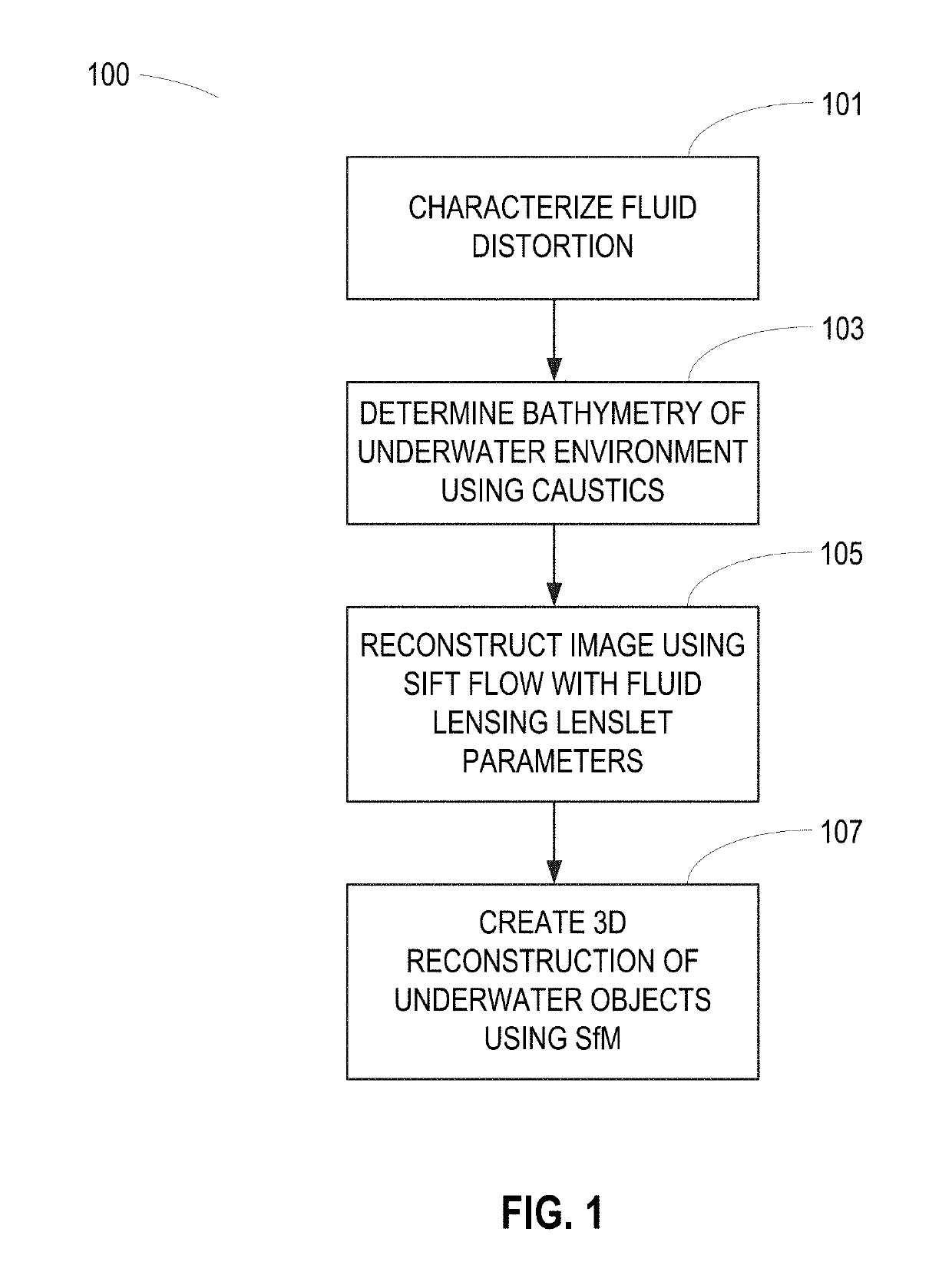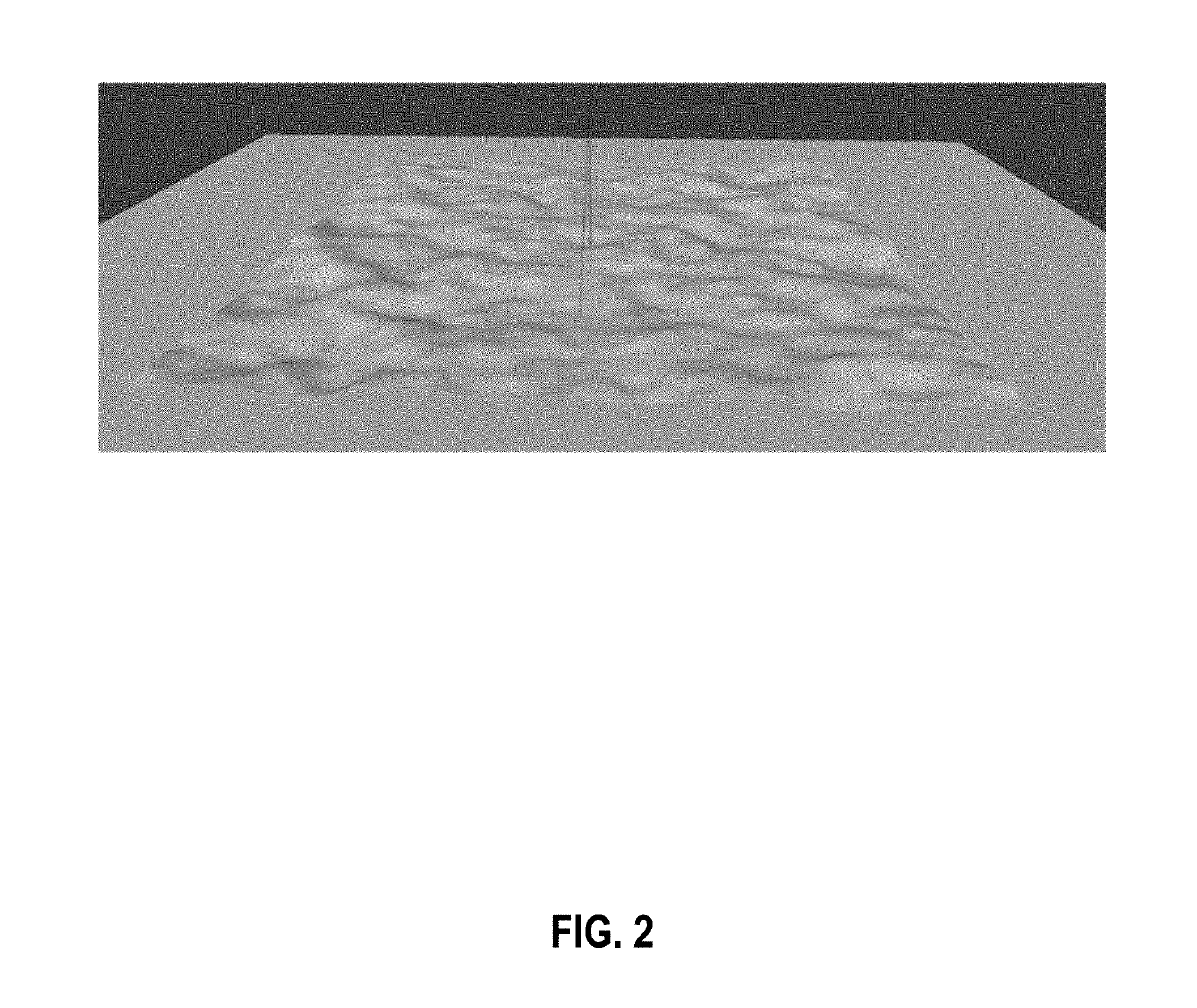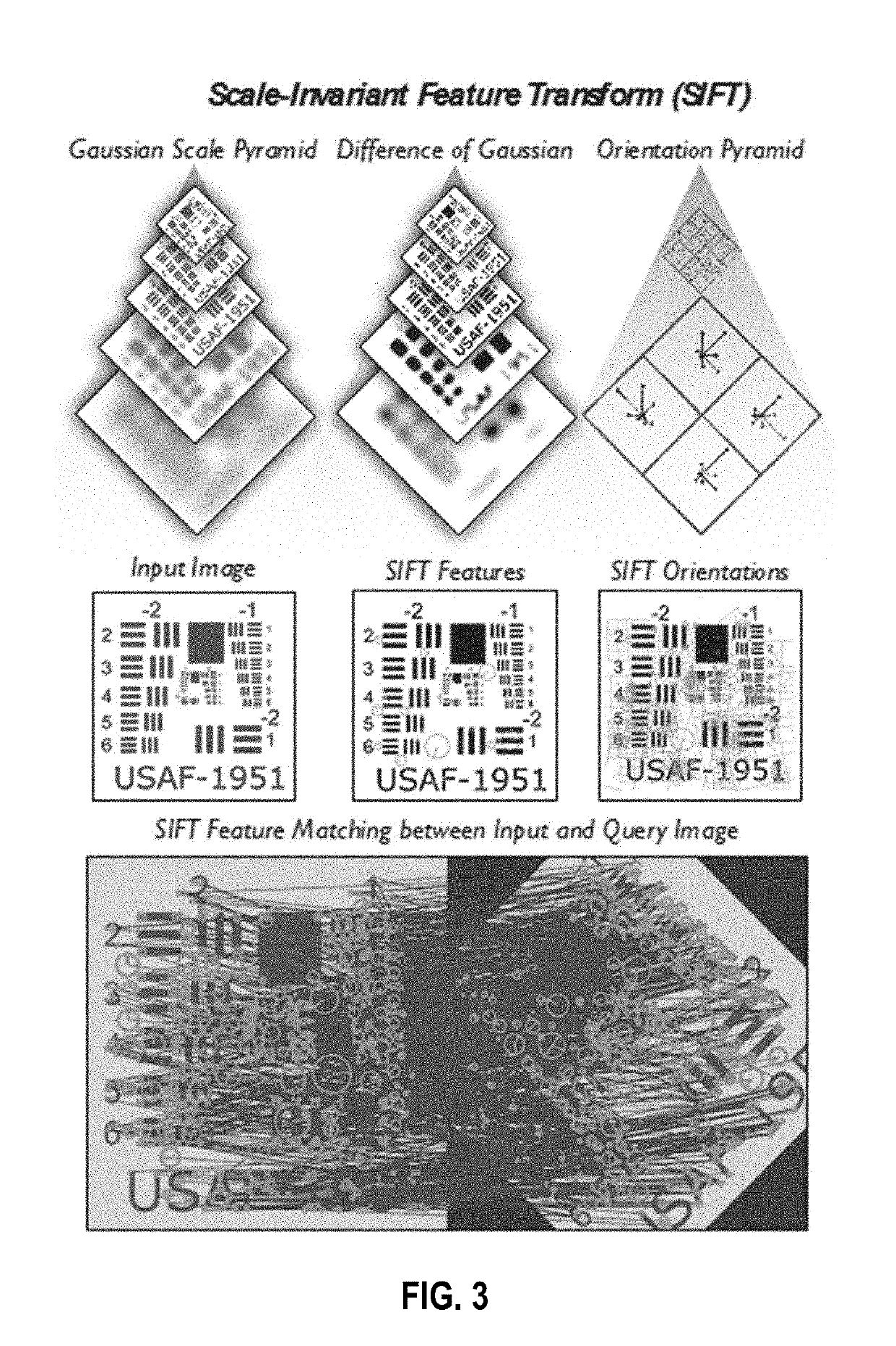System and method for imaging underwater environments using fluid lensing
a technology of fluid lensing and underwater environment, applied in image enhancement, image analysis, instruments, etc., can solve the problems of inability to accurately assess the status and health of shallow marine ecosystems such as coral and stromatolite reefs, and no remote sensing technology can robustly image underwater objects at the cm-scale or finer, so as to improve spatial resolution and signal-to-noise properties.
- Summary
- Abstract
- Description
- Claims
- Application Information
AI Technical Summary
Benefits of technology
Problems solved by technology
Method used
Image
Examples
Embodiment Construction
[0005]Embodiments are presented for a novel high-resolution aquatic remote sensing technique for imaging through ocean waves by harnessing the optical effects of fluid lensing lenslets and caustic bands. As visible light interacts with aquatic surface waves, time-dependent nonlinear optical aberrations appear, forming caustic bands of light on the seafloor, and producing refractive lensing that magnifies and demagnifies underwater objects. This fluid lensing phenomenon in the context of ocean waves can be exploited to image underwater environments at the cm-scale, or “reef-scale.”
[0006]Optical lensing elements that magnify, also called fluid lensing lenslets, are used to enhance the spatial resolution and signal-to-noise properties of remote sensing instruments. The process introduces a fluid distortion characterization methodology, caustic bathymetry concepts, fluid lensing lenslet homography technique, two dimensional image reconstruction process, and three dimensional airborne fl...
PUM
 Login to View More
Login to View More Abstract
Description
Claims
Application Information
 Login to View More
Login to View More - R&D
- Intellectual Property
- Life Sciences
- Materials
- Tech Scout
- Unparalleled Data Quality
- Higher Quality Content
- 60% Fewer Hallucinations
Browse by: Latest US Patents, China's latest patents, Technical Efficacy Thesaurus, Application Domain, Technology Topic, Popular Technical Reports.
© 2025 PatSnap. All rights reserved.Legal|Privacy policy|Modern Slavery Act Transparency Statement|Sitemap|About US| Contact US: help@patsnap.com



